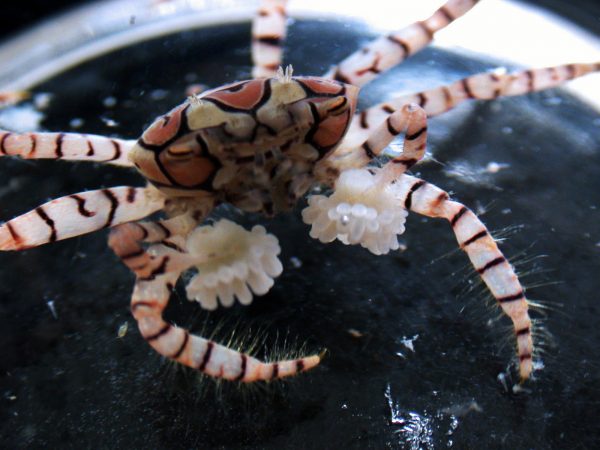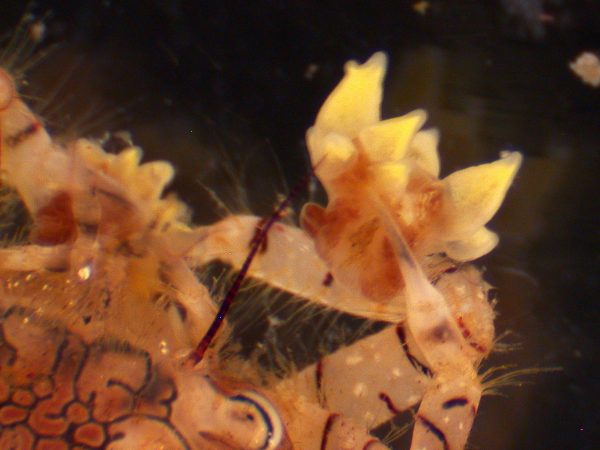The sea anemone Triactis producta (Klunzinger, 1877)
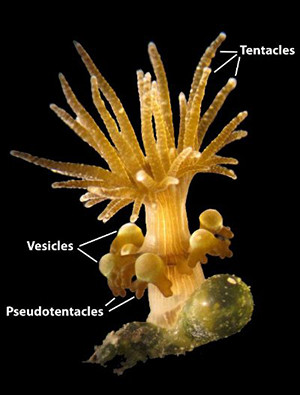
Triactis producta is the only species in the sea anemone (Actiniaria) genus Triactis (family Aliciidae). This species is found in shallow reefs of the tropical Indo-Pacific, from the Red Sea and East Africa to Hawai’i and French Polynesia. I have collected specimens from 30 m depth, but most are found shallower, between one and five meters depth. Specimens of Triactis producta are generally small, with a pedal disc diameter of 10 mm or less, and column height of 15 mm when fully expanded (Figure 1). Most commonly, specimens are found in closely packed aggregations of presumably clonal individuals. The sea anemones are cryptic and found grouped on sides or in crevices of rocks or dead coral (Figure 2). They can also be found attached to live branching scleractinian corals, occurring deep in the colony near the intersections of the coral branches (Figure 3).
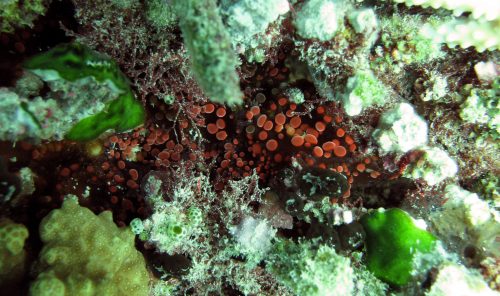
Individuals of Triactis producta are zooxanthellate, meaning they are symbiotic with zooxanthellae (unicellular and photosynthetic protozoans that live inside some of the cells of the sea anemone). The zooxanthellae continue photosynthesizing (using sunlight to produce sugars) while inside the sea anemone; the sea anemone can then use the sugars as food. It stands to reason then, that the more zooxanthellae the sea anemone houses and can expose to sunlight, the more sugars the sea anemones can obtain. Specimens of Triactis producta have evolved specialized column morphology to house dense numbers of zooxanthellae – these are called the pseudotentacles (Figure 4). Pseudotentacles are hollow, branched outpocketings of the column wall. They are usually dark brown due to the density of zooxanthellae.
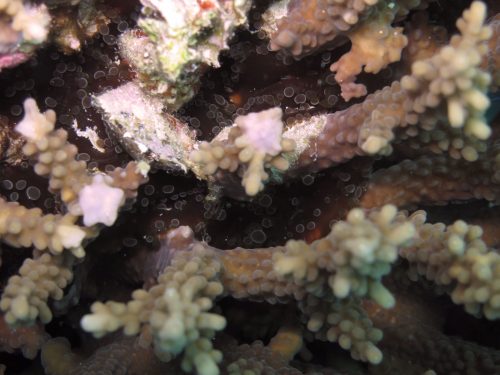
The posture of Triactis producta differs depending on presence of light. When there is light, the pseudotentacles are expanded, therefore exposing the zooxanthellae to the light to photosynthesize while the true tentacles are retracted (Figures 2 and 3). In the absence of light, at night for instance, the true tentacles are expanded (Figure 1) and the sea anemone can actively feed.
Associated with the pseudotentacles is a second specialized feature – the vesicle. The vesicles are spherical bumps (Figures 4) that are dense with nematocysts (stinging capsules found in all cnidarians like corals and jellyfish) on the pseudotentacles. They can be gray, pink, or green spherical protrusions on the brown pseudotentacles. Because of the type and density of nematocysts, it is inferred that vesicles function to defend the pseudotentacles.
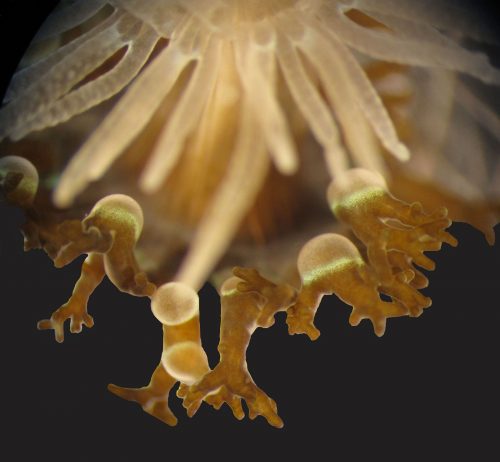
Crabs of the genus Lybia (also called boxing or pom-pom crabs) establish a mutualistic association with small sea anemones (Figure 5) – Triactis producta has been one of the species of sea anemones reported in this association. The crabs have highly modified and delicate claws, which gently clasp the sea anemone around the column (Figure 6). Having the sea anemones with their nematocysts held in this position gives the crab defense against predators. It is unclear what the sea anemone gains from this association (most likely movement and food), but they do not seem to be harmed in any way. The sea anemones in this association are very small, generally with a pedal disc diameter about 5 mm and column height of approximately 8 mm or less. The sea anemones at this stage lack distinctive morphological features used in traditional taxonomy – for instance the pseudotentacles possessed by Triactis producta. Because of this, it is unclear how many species of sea anemone are associated with Lybia crabs. Preliminary studies (using nematocyst and molecular data) have shown that specimens I received from the Indian and Pacific Oceans were in the family Aliciidae, and most likely Triactis producta.
